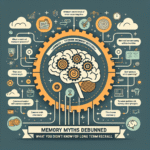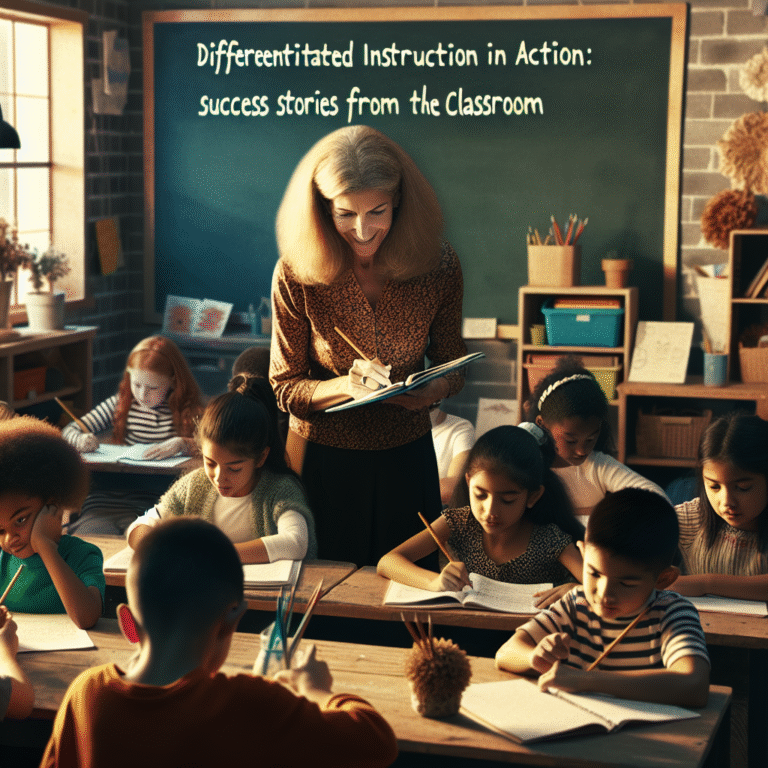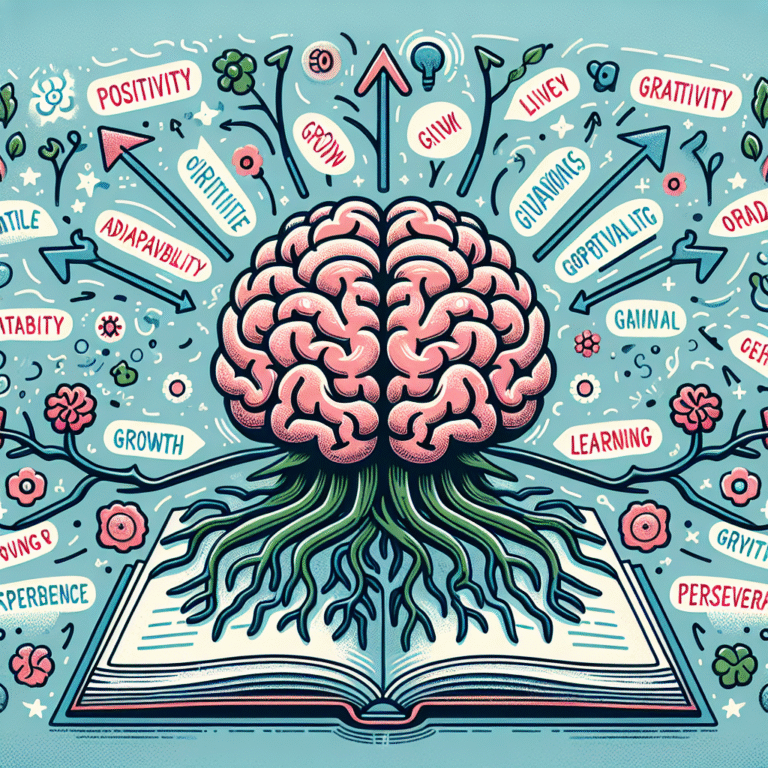
Introduction
In today’s fast-paced educational landscape, anxiety among students has reached alarming levels, often hindering their ability to learn effectively. With an overwhelming amount of information and pressure to perform, many learners find themselves grappling with stress and distraction, making it increasingly difficult to thrive academically. However, leveraging mindfulness techniques in the classroom can act as a transformative antidote. In this article, we delve into The Mindful Classroom: Techniques for Reducing Anxiety and Enhancing Learning, offering a blueprint for educators to create an environment where students can flourish emotionally and intellectually.
The Importance of Mindfulness in Education
Understanding Anxiety in Students
Recent studies indicate that nearly 20% of adolescents experience anxiety disorders, leading to diminished academic performance and social withdrawal. Understanding the roots of this anxiety can help educators identify effective strategies that foster a supportive learning environment.
What is Mindfulness?
Mindfulness refers to the practice of being present in the moment, aware of one’s thoughts and feelings without judgment. It allows students to develop emotional intelligence and cope with anxiety more effectively.
The Link Between Mindfulness and Learning
Research has shown a clear correlation between mindfulness practices and improved academic performance. Students who engage in mindful activities tend to have better focus, higher emotional regulation, and even enhanced creativity—qualities essential for effective learning.
Techniques for Creating a Mindful Classroom
1. Mindful Breathing Exercises
Description
Mindful breathing is a simple yet powerful technique that can be implemented at the beginning or end of a class. Students focus on their breath, allowing them to center themselves.
Implementation
- Setup: Have students sit comfortably at their desks.
- Instructions: Instruct them to close their eyes and take deep breaths, counting to five on the inhale and five on the exhale.
- Timing: Spend 5-10 minutes on this exercise, transitioning back to the lesson gradually.
Case Study: At Greenfield High School, teachers introduced mindful breathing exercises over a six-week period. As a result, they reported a 30% reduction in classroom disruptions.
2. Gratitude Journals
Description
Gratitude journaling involves students writing down things they are thankful for each day, promoting a positive mindset.
Implementation
- Materials: Provide students with journals or digital platforms.
- Routine: Allocate a few minutes for them to write at the beginning or end of class.
Analysis: A study at Brookside Middle School showed that students who kept gratitude journals had significantly lower anxiety levels and improved relationships with their peers.
3. Mindful Movement
Description
Incorporating light physical activity can help students release tension and improve focus.
Implementation
- Activities: Include yoga, stretching, or even a brief walk around the classroom.
- Timing: Conduct these activities during transitions or in the middle of a long class.
Case Study: At Riverside Elementary, teachers noticed heightened engagement and focus during lessons after introducing 5-minute mindful movement breaks.
| Technique | Impact on Anxiety | Impact on Learning |
|---|---|---|
| Mindful Breathing | 30% Reduction | Improved Focus |
| Gratitude Journals | 40% Reduction | Better Relationships |
| Mindful Movement | 50% Reduction | Increased Engagement |
4. The Power of Positive Affirmations
Description
Positive affirmations can help students combat negative self-talk and build self-esteem.
Implementation
- Routine: Begin each class with a collective recitation of affirmations.
- Examples: Use phrases like “I am capable” or “I am a good learner”.
Analysis: A study at Maplewood High found that students who practiced affirmations experienced a 25% increase in self-reported confidence.
5. Creating a Mindful Environment
Description
Fostering a physical classroom environment that promotes mindfulness is crucial.
Strategies
- Visuals: Incorporate calming colors and nature imagery.
- Seating Arrangements: Create cozy spaces for relaxation.
- Quiet Corners: Designate a quiet corner for students to retreat to when feeling overwhelmed.
Case Study: A redesign initiative at Willowbrook Academy resulted in increased student satisfaction and reduced anxiety levels by 20% after enhancing the classroom environment.
Integrating Mindfulness into Curriculum
1. Mindful Discussions
Description
Encouraging mindful conversations can help students express their thoughts and feelings with clarity.
Implementation
Conduct discussions in a respectful and open environment, allowing each student to express themselves without interruption.
2. Mindfulness in Literature
Description
Integrating mindfulness themes into literature can resonate with students and provide them with coping strategies.
Activities
- Textual Analysis: Explore characters that demonstrate mindfulness.
- Creative Writing: Encourage students to write about their feelings and reactions.
Challenges and Solutions
Common Challenges
- Resistance from Students: Some may view mindfulness as "uncool" or unnecessary.
- Time Constraints: Teachers often feel pressed for time in curricula-heavy environments.
- Lack of Training: Educators may not feel equipped to facilitate mindfulness practices.
Solutions
- Engagement: Showcase mindfulness research and success stories to build buy-in.
- Short Practices: Introduce brief, impactful techniques that can be layered into existing routines.
- Professional Development: Encourage schools to invest in mindfulness training for staff.
Conclusion
Incorporating The Mindful Classroom: Techniques for Reducing Anxiety and Enhancing Learning can reshape not only the academic landscape but also the emotional well-being of students. By focusing on mindfulness, educators empower their students to build resilience, improve focus, and enhance their overall learning experience.
As you embark on this journey, remember that every small step counts. Begin with one technique, observe the transformations within your classroom, and continue to foster an environment that prioritizes mental well-being.
FAQs
1. What is mindfulness, and why is it important in the classroom?
Mindfulness is the practice of focusing on the present moment without judgment. In the classroom, it helps reduce anxiety, enhances focus, and creates a supportive learning environment.
2. How can I implement mindfulness techniques with limited time?
Many mindfulness techniques, such as mindful breathing or short movement breaks, can be integrated into existing routines and take only a few minutes.
3. Will students adopt mindfulness practices easily?
While some students may resist initially, demonstrating the benefits through immediate positive experiences can encourage acceptance.
4. Can mindfulness techniques be used in all subject areas?
Yes, mindfulness practices can complement any subject. Incorporate discussions, writings, or movement breaks in any lesson plan.
5. How can I measure the effectiveness of mindfulness in my classroom?
Consider collecting qualitative data through student surveys or observation, along with quantitative data like academic performance and behavior changes, to assess the impact of mindfulness techniques.
By focusing on The Mindful Classroom: Techniques for Reducing Anxiety and Enhancing Learning, educators can implement meaningful change that resonates long beyond the classroom walls.


















Hi there! This post couldn’t be written any better! Reading through this post reminds me of my previous room mate! He always kept talking about this. I will forward this article to him. Pretty sure he will have a good read. Thank you for sharing!